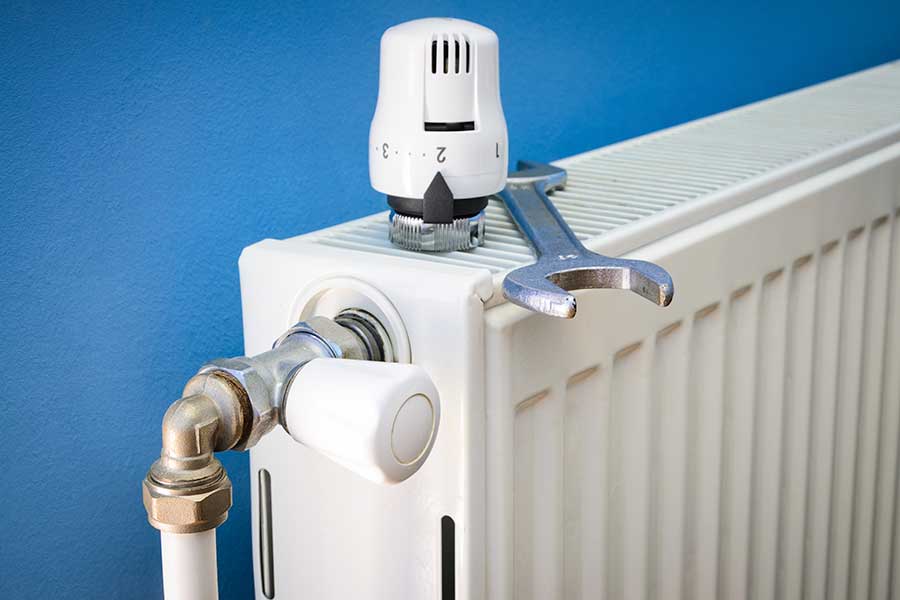This step-by-step guide will help you solve and fix common radiator problems, and get them heating your home properly again in no time.
Fixing common radiator problems
Have you discovered that your radiators aren’t heating up properly? There may be a simple fix, such as bleeding your radiator or adjusting the thermostat valve settings.
Run through our checklist below to help diagnose and fix your cold radiator problems:
- Check the boiler is working properly
- Check the timer or programmer is working
- Check if the radiator valve is open
- Check the lockshield valve
- Check for blocked valves
- Check for air pockets in the radiator system
- Check the motorised diverter valve
How to check the boiler is working properly
The first thing you should do is check for bigger problems with your heating system. If none of your radiators are heating up, rather than just one of them, then there may be something wrong with your boiler.
If you find that your boiler won’t start up, this could be down to one of a number of issues, from low water pressure to a faulty ignition lead. Find out what to do if your boiler won’t ignite.
How to check the timer or programmer is working
Radiator issues could be down to a faulty thermostat timer or programmer. If this is the case, you may be able to rectify this problem yourself. Make sure that your central heating is switched on and also check the thermostat to ensure that it is turned up properly.
Additionally, you could check that the timer’s settings are accurate. If a power cut or seasonal time change has recently occurred, your timer may have incorrect settings and may be the cause of your problem.
How to check if the radiator valve is open
Many modern radiators have valves with temperature gauges that go up to five or six and can be controlled by a simple turn to allow water in our out. Check that your valves are open by turning the knobs that are located at the bottom corners of your radiators anticlockwise and back again.
How to fix the lockshield valve
Located at the opposite end of the radiator to the main valve, the lockshield valve controls the flow of hot water into the radiator. In order to allow more hot water to pass through, the settings may need to be changed.
It’s possible to adjust thermostatic valves by hand, but a valve adjuster or spanner is required to tweak the lockshield – this is why it is best left to a professional engineer. Contact us if you’re in need of assistance, our friendly engineers have the skills and experience to fix this issue.
How to fix blocked valves
Magnetite, often in the form of black sludge, can sometimes build up inside the radiators, which means the system may need to be flushed out. Our Gas Safe registered engineers are all trained to conduct a professional system Powerflush – a measure that involves sending a chemically-infused liquid at a high velocity through your system to rid it of any inhibiting substances and restore your central heating’s efficiency.
How to bleed air pockets in the radiator system
Air can often get trapped in your central heating system and cause faults such as cold spots. This is another issue that you may be able to fix yourself. Read our full guide on how to bleed a radiator to tackle the issue quickly.
How to fix the motorised diverter valve
If none of the above seem to be the cause of your radiator problems, there may be a fault with your motorised diverter valve. At times, your boiler’s diverter valve could become jammed and stuck on heating mode, which could hinder your system’s ability to deliver hot water.
This is NOT an issue that you should attempt to fix yourself; we recommend you seek the help of a qualified, Gas Safe registered engineer who could come and replace the valve or service its working parts.
All of our engineers are Gas Safe-registered and fully qualified to diagnose and fix your central heating problems, so whether you know what the problem is or not, you can book an appointment with a local expert to diagnose the issue and get your heating back up and running effectively again.
